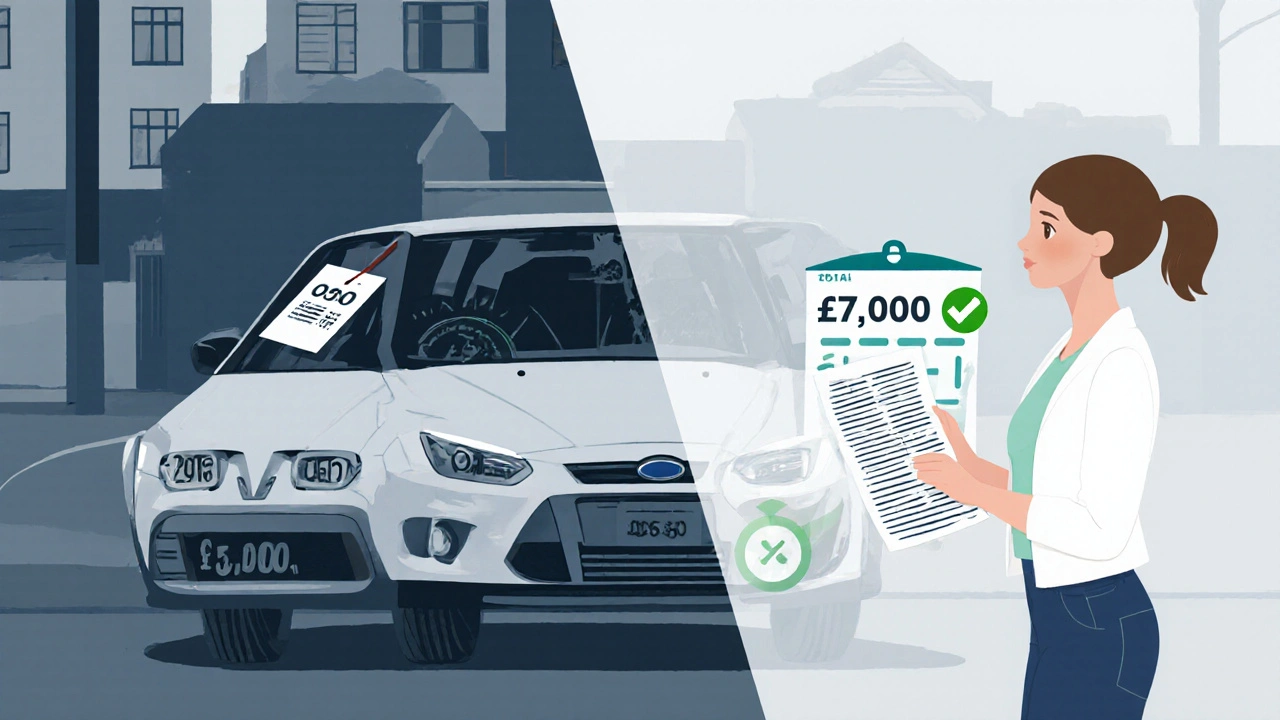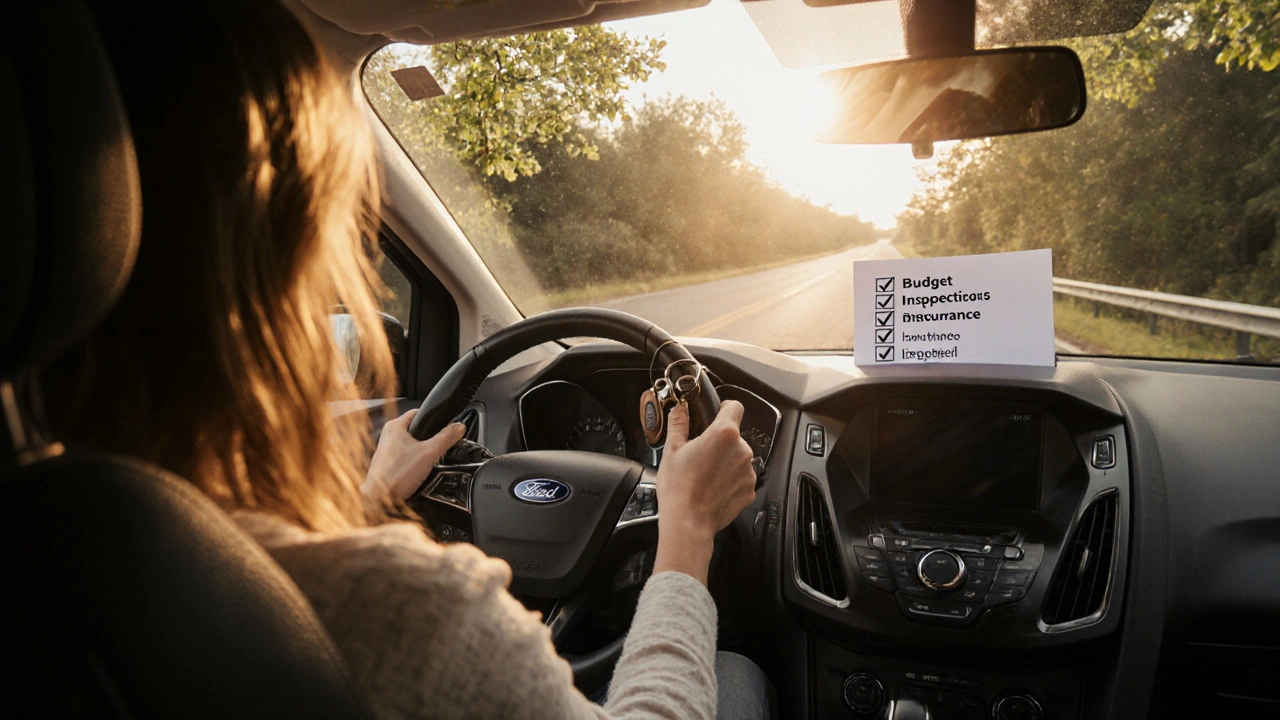Car Budget Calculator
Calculate Your Maximum Car Budget
The 20% rule helps you determine how much you should spend on a car based on your annual income. This tool shows you the maximum price you should consider for a vehicle, based on the 20% budgeting guideline.
Your Budget Analysis
How the 20% Rule Compares to Other Budgeting Guidelines
| Rule | Max Price as % of Income | Down Payment Recommendation | Best For |
|---|---|---|---|
| 10% Rule | 10% | 20% of car price | Buyers with tighter budgets or high-cost living areas |
| 20% Rule (You) | 20% | 10% of car price | General used-car buyers wanting a safety net |
| 30% Rule | 30% | 5% of car price | Those who prioritize newer models or need a larger vehicle |
Important Considerations
This calculator shows the maximum purchase price according to the 20% rule, but keep in mind:
- Insurance costs can be higher for certain vehicle models
- Depreciation is higher for newer cars
- Always check vehicle history reports before purchasing
- Consider the total cost of ownership including maintenance and fuel
The 20% rule is a good starting point, but every financial situation is different. Adjust as needed based on your individual circumstances and goals.
When you start hunting for a used car, the biggest question isn’t just “Which model looks good?” but “Can I afford it without blowing my finances?” The 20% rule when buying a car is a quick‑and‑dirty test that helps you stay in the safe zone. In this guide we break down the rule, show you how to apply it with real numbers, point out the common traps, and hand you a ready‑to‑use checklist.
What the 20% rule actually means
20% rule is a budgeting guideline that suggests you should spend no more than 20% of your gross annual income on the total cost of a car you plan to buy. The idea is simple: if you earn £30,000 a year, you’d look for a vehicle priced around £6,000 or less. The rule doesn’t magically guarantee a perfect purchase, but it forces you to keep the price in line with what your paycheck can comfortably support.
Why the rule matters - the hidden costs behind a car
Cars are more than a purchase price. They come with depreciation, insurance, tax, maintenance, and fuel. By capping the sticker price at 20% of your income, you automatically leave room for those recurring expenses.
Consider depreciation. A new car can lose 20‑30% of its value in the first year alone. A used car bought within the 20% band typically has already taken the steepest hit, meaning you won’t lose as much equity as you would with a pricier, newer model.
Keeping the purchase price low also reduces the size of any loan you might need, which in turn lowers interest costs and keeps monthly payments manageable. The rule therefore protects you from over‑leveraging and helps you stay flexible for other life goals.

Step‑by‑step: How to calculate the 20% rule
- Find your gross annual income (before tax). For example, £28,500.
- Multiply that amount by 0.20. £28,500×0.20 = £5,700.
- The result is the maximum price you should consider for a used car.
Let’s walk through a concrete scenario.
Emma earns £36,000 a year. Using the rule, her ceiling is £7,200. She finds a 2016 Ford Focus with 55,000mi for £7,000. The price fits, so she can move on to the next checks (history, inspection, finance). If she had found a similar model for £9,000, the rule would signal her to either negotiate a lower price or look elsewhere.
Applying the rule in real life - cash vs. finance
If you pay cash, the calculation stays the same. The 20% rule is a hard ceiling because you’re spending money you already have.
When you finance, the rule still applies to the vehicle’s total price, not just the down payment. After you decide on a car that meets the 20% limit, work out a down payment that feels comfortable - many experts suggest at least 10% of the car price. For Emma’s £7,200 car, a £720 down payment leaves a £6,480 loan. At a 6% APR over 48months, her monthly payment would be about £150, well within a typical 15%‑of‑income threshold for car expenses.
Remember, the rule is about the price you sign for, not the monthly payment alone. A low‑price car with a long loan term can still be a bad deal if the interest pushes the total cost too high.
Common pitfalls and when the rule might need tweaking
- Luxury or performance cars. The 20% rule can be overly restrictive for enthusiasts. If you’re set on a higher‑priced vehicle, you’ll need a larger income or a bigger down payment to keep the loan affordable.
- High insurance costs. Sporty models often carry higher premiums. Add the annual insurance estimate to your budgeting spreadsheet - if it eats up a large chunk of the 20% cushion, reconsider.
- Short‑term ownership. If you plan to keep the car for less than three years, depreciation becomes a bigger factor. You might want to stay below 15% of income to leave extra room for resale loss.
- Vehicle condition. A cheap car with hidden problems (engine, transmission) can end up costing more in repairs. Always combine the 20% rule with a thorough inspection and a vehicle history report.

Quick checklist for a smart used‑car purchase
- Calculate your 20% price ceiling based on gross annual income.
- Search for cars at or below that price.
- Request a vehicle history report (e.g., HPI, Carfax) and verify mileage.
- Inspect the car or have a trusted mechanic check the mileage, brakes, suspension, and any rust.
- Negotiate a price that leaves at least a 10% down payment.
- Run the numbers on any loan: interest rate, term, total cost.
- Factor in insurance, road tax, and estimated maintenance before signing.
- Confirm the car fits your daily needs (size, fuel economy, reliability).
How the 20% rule compares to other budgeting guidelines
| Rule | Maximum price as % of gross income | Typical down‑payment recommendation | Best for |
|---|---|---|---|
| 20% rule | 20% | 10% of car price | General used‑car buyers wanting a safety net |
| 10% rule | 10% | 20% of car price | Buyers with tighter budgets or high‑cost living areas |
| 30% rule | 30% | 5% of car price | Those who prioritize newer models or need a larger vehicle |
Most financial advisers warn that the 10% rule can be too restrictive for most families, while the 30% rule often leads to higher debt levels. The 20% rule hits a sweet spot: affordable enough to keep you out of trouble, yet flexible enough to let you get a reliable, fairly recent model.
Frequently Asked Questions
Is the 20% rule only for used cars?
No. You can apply it to any vehicle purchase, but it’s most useful for used cars because they already absorbed the steepest depreciation.
What if my gross income fluctuates, like freelance work?
Use your average annual earnings over the past 12‑months. If your income is highly variable, err on the side of a lower percentage (15‑18%) to stay safe.
Does the rule include tax, registration, and insurance?
The rule focuses on the vehicle’s purchase price. However, you should budget an additional 5‑10% of that price for tax, registration, and first‑year insurance.
Can I stretch the rule if I have a large savings buffer?
Yes, but treat the extra amount as a one‑off expense, not ongoing debt. Keep your monthly car‑related outlay under about 15% of your net income.
What’s a good source for a vehicle history report?
In the UK, the DVLA’s MOT history, HPI Check, or AutoCheck are reliable. They reveal mileage discrepancies, outstanding finance, and previous accidents.


Comments
Sheila Alston
If you think you can breeze past basic budgeting and still be okay, think again. The 20% rule is a simple guardrail, not a suggestion for the carefree. Skipping it usually ends with stretched finances and regret. Stick to the rule and you’ll avoid the nightmare of a payment you can’t afford.
October 14, 2025 at 07:10
sampa Karjee
One must recognize that the 20% rule, while convenient, often masks deeper financial nuances. It presumes a static income and disregards regional cost-of-living disparities. Moreover, it neglects the opportunity cost of allocating capital elsewhere. A nuanced approach would incorporate liquidity needs and debt obligations. Simply chanting a percentage without context is intellectually lazy.
October 14, 2025 at 18:17
Patrick Sieber
That’s a fair point about regional variations, but the rule still offers a solid baseline for most. It’s a quick sanity check before diving into the details you mentioned. You can always tweak the number once you factor in taxes, insurance, and personal savings goals. Starting with a clear ceiling helps keep the conversation grounded.
October 15, 2025 at 05:24
Kieran Danagher
The 20% rule is basically the financial equivalent of “don’t eat the whole cake.” First, you set a ceiling based on income, which prevents you from drowning in debt. Second, it forces you to look at the total cost of ownership, not just the sticker price. Third, it keeps you from over‑leveraging on a loan that will gnaw at your paycheck. Fourth, it leaves room for insurance, tax, and maintenance without turning your budget into a black hole. Fifth, it’s an easy mental model that anyone can apply. Sixth, it gives you a benchmark to negotiate against a seller. Seventh, it discourages impulse buys of flashy models that depreciate faster. Eighth, it aligns with the principle of living below your means. Ninth, it can be adjusted for those with irregular incomes by using a lower percentage. Tenth, it’s a guardrail, not a prison, so you can stretch it if you have a robust emergency fund. Eleventh, it helps you avoid the common pitfall of financing a vehicle you can’t actually afford. Twelfth, it encourages you to consider alternatives like certified pre‑owned or leasing. Thirteenth, it forces you to think about the loan term and interest rates. Fourteenth, it highlights the importance of a reasonable down payment. Fifteenth, it reminds you that the car is a depreciating asset, not an investment. Finally, keeping the purchase price low gives you better financial flexibility for other life goals.
October 15, 2025 at 16:30
OONAGH Ffrench
Indeed the rule provides a pragmatic starting point; however one must also account for ancillary expenses. A modest vehicle may still incur surprisingly high insurance premiums. Likewise tax and registration fees can erode the savings expected from a lower purchase price. Hence a holistic view is indispensable.
October 16, 2025 at 03:37
poonam upadhyay
Oh wow, this whole 20% rule thing is like the glittery unicorn of car‑budgeting! It’s dazzling, it’s sparkly, and it makes you feel like you’ve cracked some secret code to financial nirvana!!! But let’s not forget the hidden monsters lurking in the fine print – insurance nightmares, maintenance gremlins, and the dreaded depreciation demon!! If you don’t tame those beasts, your budget will crumble faster than a cookie in a rainstorm!! So strap on that analytical armor and march boldly into the dealership, armed with spreadsheets, history reports, and a healthy dose of skepticism!!
October 16, 2025 at 14:44
Shivam Mogha
Sounds solid.
October 17, 2025 at 01:50
Sheetal Srivastava
From a macro‑financial perspective, the 20% heuristic serves as a risk‑mitigation vector within the broader portfolio optimization framework. By capping capital exposure, you preserve liquidity buffers essential for stochastic shock absorption. Moreover, integrating depreciation velocity metrics refines net present value calculations, ensuring the acquisition aligns with strategic asset allocation goals. The interplay between fixed‑cost amortization and variable‑cost volatility further underscores the necessity of a disciplined budget ceiling.
October 17, 2025 at 12:57
Jitendra Singh
I appreciate the thorough breakdown; it’s helpful to see both the rule’s simplicity and its limitations. Keeping the purchase price low gives flexibility for other financial priorities. It’s also wise to consider the total cost of ownership beyond just the sticker price. A balanced approach-using the rule as a baseline and then personalizing it-seems like the most sensible route.
October 18, 2025 at 00:04
Madhuri Pujari
Oh, bravo! You’ve just reinvented the wheel with a rule that every financial textbook already warns about!! It’s almost adorable how you think a simple percentage magically solves complex budgeting dilemmas!! Let’s not forget that real‑world finances involve taxes, insurance, and unforeseen repairs-nothing a neat 20% slice can cover!! So kudos for the effort, but perhaps a dash of reality would serve you better than that glossy rule of thumb!!
October 18, 2025 at 11:10
Nalini Venugopal
Just a quick note: “don’t” should have an apostrophe, and “can't” needs one too. Also, “budgeting” is spelled correctly here. Other than that, the post reads well and the points are clear.
October 18, 2025 at 22:17